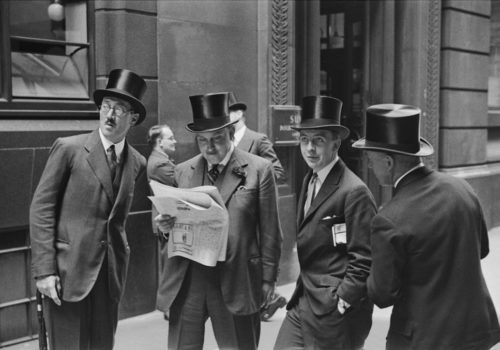The exhibit Emil Otto Hoppé: Unveiling a Secret – Industrial photographs, 1912-1937, is on at Mast Photogallery in Bologna, with 190 unseen images on industry and labour, taken between 1912 and 1937 in various countries: USA as well as India, Great Britain, Australia and New Zealand, among them. It’s a tribute to one of the most important photographers (the London National Portrait Gallery dedicated a solo exhibition in 2011), who nonetheless remained quite unknown until recently.
“During his lifetime, especially the 1910s and the 1940s, Emil Otto Hoppé was one of the most famous photographers in the world and a highly respected portrait photographer in London, with a large studio in South Kensington (Millais House, 27 rooms on four floors) he had a clientele comprising the most important politicians, businessman, artists, dancers, writers, philosophers, the English nobility and the British Royal Family”, Urs Stahel, Mast photogallery and exhibition curator, says.
Hoppé was also a brilliant landscape and travel photographer, and he documented so many countries for projects like the Orbis Terrarum book series published by Wasmuth Verlag. He was also the author of some twenty books in his lifetime. He was “The Master”, as Cecil Beaton called him (London, 1945).
Nonetheless it happened “he was never quoted in the histories of photography that have been written and published since the 1940s. Hoppé disappeared for decades and only gradually regained public awareness around ten years ago thanks to the efforts of Graham Howe and Curatorial Assistance Inc, in Pasadena, California”, Stahel explains. His work had remained hidden for a long time in the London photographic archives which in 1954 purchased fifty years of works from the artist himself at the age of 76 at the end of his long career. After being filed by subject (and not by author) with millions of other “stock” pictures, his photographs were literally entombed.
“As I peered into the archive’s dusty files and located just a few of the Hoppé prints I knew that I had found a lost treasure”, Howe says. After a long work organizing, cataloguing, and digitizing work, now the exhibit at Mast presents for the first time his iconic images of the second industrial revolution.
Like his contemporaries Alfred Stieglitz, Edward Steichen, Walker Evans, August Sander and Edward Weston, Hoppé was one of the most important photographers of his era. In the 1920s and 1930s, after having consolidated his reputation as a topographic and portrait photographer (his modernist portraits describe a virtual Who’s Who of important personalities of those years) depicting famous European artists, scientists and politicians like George Bernard Shaw, Ezra Pound, T.S. Eliot, Rudyard Kipling, King George V, Vita Sackville-West, Filippo Tommaso Marinetti, and Albert Einstein, Hoppé set off on his travels to capture the romance and grandeur of industrial sites around the world.
During his explorations – in Germany, Great Britain, the United States, India, Australia, New Zealand and other countries – he photographed the futuristic industrial landscape, seeing its gargantuan machinery as both technology and art. Hoppé was aware of how contemporary industrial technology was heralding the world into a new era where the very nature of work and production would profoundly change.
According to Stahel, “he threw quite a modern look on the people, villages, landscapes and industries. At the same time for a long period he had been printing his pictures in a tonal and soft-focus ways” to obtain a special effect of roundness. He was a multifaceted artist, “searching for a “sound” that combines the appearance of a person, a landscape, a factory, the essential, the existential. Hoppé is modern and preserving, romantic and pragmatic; he is an artist and a businessman”. Maybe it would not have been easy to classify him in an history of photography. And, as Howe says, Hoppé can be considered “the missing link in early Salonist photography and photo-modernism, which connects the better known American innovators to the lesser known photo-pioneers of Britain and Europe where Hoppé was the leading figure”.
Alongside Hoppé’s industrial photography on show, Mast exhibits the rich variety of subject matter in the artist’s repertoire with digital projections of other themes from celebrity portraits to human typologies and landscapes.
The exhibition is organised by the Fondazione Mast, Bologna, in collaboration with the E.O. Hoppé Estate Collection / Curatorial Assistance, California.
EXHIBITION
Emil Otto Hoppé: Unveiling a Secret
Industrial photographs, 1912-1937
January 21st – May 3rd, 2015
MAST Photo Gallery
Via Speranza 42
Bologna
Italy
Tuesday-Sunday 10.00 – 19.00 (free entrance)
http://www.mast.org/
















